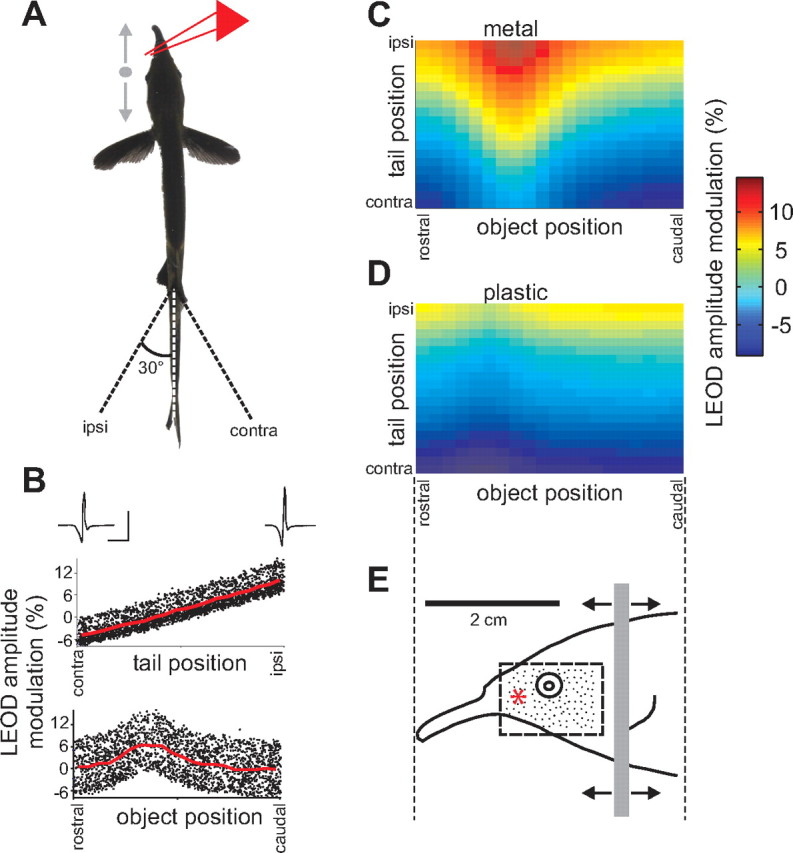Figure 2.

Characterizing electrosensory stimulus encoding in the presence of self-generated signals. A, Schematic illustrating the experimental design. Small plastic or metal cylinders were moved alongside the fish (between the tip of the chin appendage and the operculum) while the tail was simultaneously displaced through an arc of ±30°. Movements of the object and tail were periodic and uncorrelated. Effects of object and tail position on LEOD amplitude were monitored by a recording dipole (red lines) placed rostral to the eye of the fish. B, Changes in LEOD amplitude resulting from simultaneous movements of the tail and a 2 mm diameter metal cylinder placed 5 mm lateral to the fish, plotted versus tail position or object position alone. Traces are LEOD waveforms recorded near the skin of the fish at the extremes of the tail movement. Calibration: 40 mV/cm, 0.5 ms. C, D, Joint dependence of LEOD amplitude modulation on tail and object position. Data plotted in C are the same as those shown in B. Object in D was a 2 mm diameter plastic cylinder placed 5 mm lateral to the fish. E, Lateral view of the fish indicating the range of object movement (gray bar) relative to the receptor surface. Scale bar in E applies to C and D as well. Neural recordings were restricted to units receiving afferent input from electroreceptors located within the area indicated by the dashed rectangle. Black dots indicate the approximate density of electroreceptors in this area. The red asterisk indicates the position of the LEOD recording dipole.
